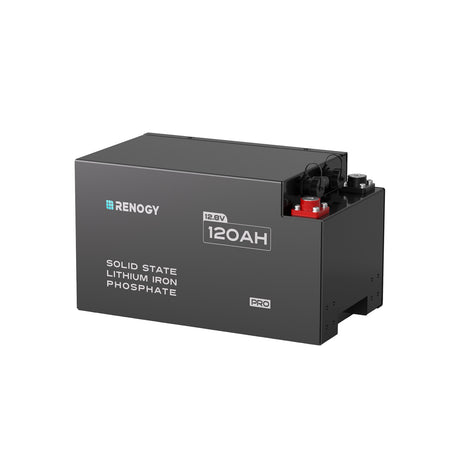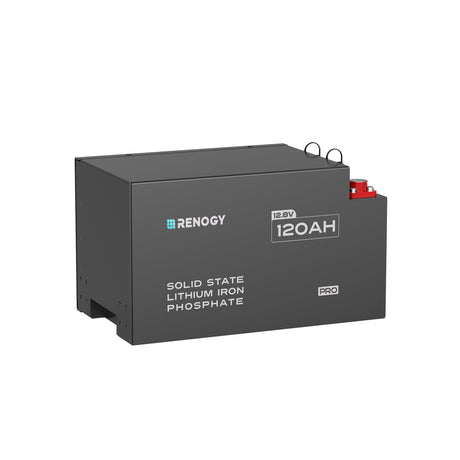Renogy
Renogy REGO - Batterie lithium-fer-phosphate ultra-fine 12,8 V 104 Ah
Ultra-thin 2.4 in9x slower temp riseDe C$979.99C$1,099.99Prix unitaire /Indisponible- New
Renogy
70% Faster Self-heatingOver 3000W OutputDe C$851.99Prix unitaire /Indisponible
Frequently Asked Questions
How long do Lithium Iron Phosphate batteries typically last?
How long do Lithium Iron Phosphate batteries typically last?
LiFePO4 batteries typically last 3,000–5,000 charge cycles, translating into 8–12 years of use. This is significantly longer than AGM or traditional lithium-ion batteries. Many Canadian users report reliable performance even beyond a decade when batteries are properly maintained. Their long lifespan makes them a cost-effective and environmentally friendly choice for solar storage, RV, and marine applications.
What are the differences between LiFePO4 and AGM batteries?
What are the differences between LiFePO4 and AGM batteries?
LiFePO4 batteries are lighter, more efficient, and last 4–6 times longer than AGM batteries. While AGM batteries have lower upfront costs, LiFePO4 delivers deeper usable capacity, faster charging, and no maintenance requirements. In Canada, where reliable off-grid power is essential for cabins, RVs, and boats, LiFePO4 batteries are the superior long-term investment despite higher initial costs.
Can I use LiFePO4 batteries for my RV or camper in Canada?
Can I use LiFePO4 batteries for my RV or camper in Canada?
Yes, LiFePO4 batteries are an excellent choice for RVs and campers in Canada. They provide longer runtime, faster recharging, and a much longer lifespan than AGM batteries. Their lightweight design reduces overall vehicle weight. However, in cold climates, installing a heated battery or insulated compartment is essential for reliable winter camping, ensuring consistent performance even in sub-zero Canadian temperatures.
How should I store LiFePO4 batteries during the Canadian off-season?
How should I store LiFePO4 batteries during the Canadian off-season?
During the Canadian winter off-season, store LiFePO4 batteries at 50–70% charge in a cool, dry location above freezing. Disconnect all loads and chargers, and check voltage every 3–6 months. Avoid storing fully charged or in extremely cold conditions. Proper seasonal storage ensures your batteries remain healthy and ready for use in spring, extending their overall lifespan significantly.
How well do LiFePO4 batteries perform in extreme Canadian cold?
How well do LiFePO4 batteries perform in extreme Canadian cold?
LiFePO4 batteries discharge effectively down to about –20°C, but charging must never occur below 0°C. In extreme Canadian cold, capacity decreases temporarily, but proper insulation or heated battery systems allow reliable performance. For RV, marine, and solar users, investing in heating blankets or insulated compartments is crucial to ensure long-lasting operation and protect against permanent cell damages.




